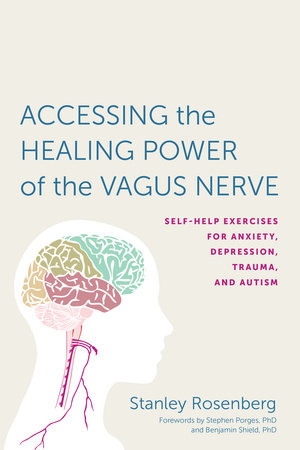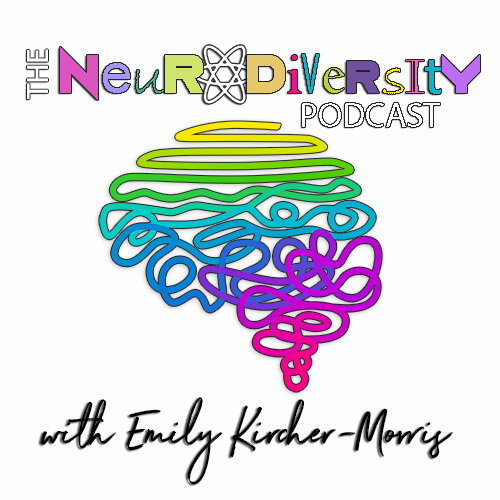TOPIC
Autism & trauma
Below are the best resources we could find on Autism and trauma.
FILTER

TOPIC
- Children’s Well-Being (133)
- Communication Skills (129)
- Connection (124)
- Academic Struggles (121)
- Self-Discovery (120)
- Parenting (120)
- Young Adult Well-Being (114)
- Identity (106)
- Transitions (97)
- Setting Limits and Boundaries (97)
- Access to Education (96)
- BIPOC Well-Being (95)
- Resilience (95)
- Self-Worth (94)
- Honoring Emotion (94)
- Cognition (94)
- Search for Purpose (92)
- Mental Health Challenges (90)
- Child’s ADD/ADHD (89)
- Depression (86)
- Imagination and Creativity (84)
- Talk Therapy (83)
- Child’s Emotional Growth (78)
- Family Dynamics (77)
- LGBTQIA Well-Being (77)
- Grief (77)
- Self-Acceptance (74)
- Social Justice (74)
- Offering Support to Others (72)
- Gender Identity (69)
- Child’s Challenging Behavior (69)
- OCD (68)
- Memory (68)
- Asking for Help (67)
- Managing Energy (67)
- Criticism and Rejection (67)
- Confidence (66)
- Mentoring (66)
- Activism/Service (66)
- Child’s Anxiety (66)
- Burnout (66)
- Digital Life (65)
- Empathy (65)
- Play (65)
- Self-Reflection Practices (65)
- Child Defiance (65)
- Time Management (64)
- Decision Making (64)
- Suicide (64)
- Inner Strengths (64)
- Gratitude (64)
- Child’s Social Media Addiction (64)
- Relationship Challenges (63)
- Belonging (61)
- Child Depression (61)
- Curiosity (60)
- Optimism (58)
- Anxiety (58)
- Romantic Relationships (57)
- Cognitive Psychology (56)
- Life Challenges (56)
- Family Therapy (54)
- Problem Solving (53)
- Trauma (53)
- Social Anxiety (53)
- Relationship with Money (52)
- Failure (51)
- Psychology (47)
- Traumatic Grief (47)
- Finding Meaning (46)
- Facing Own Death (46)
- Existentialism (46)
- Genetics (45)
- Self-Pressure (43)
- Goal Setting (42)
- Motivation (41)
- Friendship (41)
- Neuropsychology (40)
- Imposter Syndrome (39)
- Women’s Well-Being (39)
- Black Well-Being (39)
- Self-Limiting Beliefs (39)
- Marriage (39)
- Social Psychology (37)
- Epigenetics (36)
- Self-Care (36)
- Intimacy (35)
- Creative Well-Being (34)
- Healing Approaches (33)
- Trauma Healing (32)
- Sexuality (32)
- Child’s Trauma (32)
- Racial Identity (31)
- Speaking Your Truth (31)
- Vulnerability (31)
- Self-Expression (31)
- Personal Development (31)
- Self-Healing (31)
- Rest (31)
- Art Therapy (30)
- Motherhood (30)
- Community Healing (30)
- Self-Esteem (30)
- Courage (30)
- Bullying (30)
- Feminism (29)
- Spiritual Growth (29)
- Toxic Relationships (29)
- Inner Child (29)
- Body Positivity (29)
- Masculine/Feminine Dynamics (29)
- Storytelling (29)
- Freedom (29)
- Wholeness (29)
- Self-Love (29)
- Racial Healing (29)
- Happiness (29)
- Focus (29)
- Manifestation (29)
- Love (29)
- Joy (29)
- Forgiveness (29)
- Fear (29)
- Faith (29)
- Inner Peace (29)
- Divorce and Breakup (28)
- Stress Management (27)
- Pregnancy and Childbirth (26)
- Entrepreneurship (25)
- Grace (25)
- Unconscious Bias (23)
- Adoption (22)
- Racism (22)
- Male Friendship (22)
- Disabled Well-Being (21)
- Honoring Ancestors (21)
- Intergenerational Trauma (21)
- Generational Healing (21)
- Immigration and Assimilation (19)
- Death or Loss of a Child (18)
- Self-Reliance (14)
- Doubt (12)
- Growth Mindset (12)
- Journaling (12)
- Work Challenges (11)
- Social Presence (11)
- Relationship with Time (10)
- Highly Sensitive People (10)
- Synesthesia (10)
- Self-Development (10)
- Neuroscience (10)
- Financial Instability (9)
- Intention (9)
- Habits of Mind (9)
- Work-Life Balance (9)
- Memoir (8)
- Affirmations (8)
- Emotional Intelligence (EQ) (8)
- Sexual Assault or Abuse (7)
- Self-Actualization (7)
- Transgender Well-Being (6)
- Mindfulness (6)
- Collaboration (6)
- Family Acceptance (5)
- Self-Mastery (5)
- Polyvagal Theory (5)
- Patience (5)
- Challenges with Teens (4)
- Nonbinary Well-Being (4)
- Perception (4)
- Authenticity (4)
- Leadership (4)
- Work Ethic (4)
- Female Friendship (4)
- Sex (4)
- Cross-Cultural Dynamics (3)
- Acceptance (3)
- Social Responsibility (3)
- Habit Formation (3)
- Work Relationships (3)
- LGBTQIA Relationships (3)
- Animal Connection (3)
- Caregiver Well-Being (2)
- Self-Discipline (2)
- Fiction (2)
- Co-Parenting (2)
- Self-Control (2)
- Adaptability (2)
- Self-Compassion (2)
- LGBTQIA Sexuality (2)
- Grit (2)
- Productivity (2)
- Sleep (2)
- Physical Therapy (2)
- New Relationships (2)
- Loneliness (2)
- Human Potential (2)
- Functional Medicine (2)
- Consciousness (2)
- Fatigue (1)
- Life-Altering Injury (1)
- Psychology and Spirituality (1)
- Physical Health (1)
- Peak Performance (1)
- Body Image (1)
- Sexual Health (1)
- Men’s Well-Being (1)
- Misophonia (1)
- Positive Thinking (1)
- Interdependence (1)
- Fellowship and Community (1)
- Kindness (1)
- Science and Spirituality (1)
- Latinx Well-Being (1)
- Trust (1)
- Shame (1)
- Living as an Empath (1)
- Racial Justice (1)
- Yoga Therapy (1)
- Yoga (1)
- Stress (1)
- Spiritual Development (1)
- Self-Harm (1)
- Rolfing (1)
- Psychedelic Journey (1)
- Personality Typing (1)
- Panic Attacks (1)
- Negative Self-Talk (1)
- Mindfulness Meditation (1)
- Mindfulness Practices (1)
- Meditation (1)
- MDMA (1)
- Household Labor (1)
- Chronic Anxiety (1)
- Gaming Addiction (1)
- Exercise (1)
- Enlightenment (1)
- Eating Disorders (1)
- Drum Therapy (1)
- Disconnection (1)
- Passion (1)
- Visualization (1)
- Compassion Fatigue (1)
- Compassion (1)
- Cognitive Behavioral Therapy (1)
- Boundary Confusion (1)
- Buddhism (1)
- Animal Welfare (1)
- Animal Communication (1)
EXPLORE RELATED TOPICS
- ADD/ADHD
- Synesthesia
- Child’s Autism
- Neurodiversity
- Emotional and Mental Health
- Learning Styles
- Children’s Well-Being
- Communication Skills
- Connection
- Academic Struggles
- Parenting
- Self-Discovery
- Young Adult Well-Being
- Identity
- Access to Education
- Setting Limits and Boundaries
- Transitions
- BIPOC Well-Being
- Resilience
- Cognition
- Honoring Emotion
- Self-Worth
- Search for Purpose
- Mental Health Challenges
UP NEXT
Neurodiversity
Want More Like This?
To continue customizing your FindCenter experience, create an account. It’s free!
Create an account to discover wisdom, save your favorite content, and connect with teachers and seekers.
Get Started
IT’S FREE
If you already have an account, please log in.





